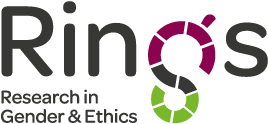A life history gender analysis of the health workforce in Cambodia
An adequate and qualified health workforce is critical for achieving Universal Health Coverage (UHC) and responding to the Sustainable Development Goals (SDGs). Frontline health workers who are mainly women, play important roles in responses to crisis. Despite women making up the vast majority of the health workforce, men occupy the majority of leadership positions. This study aims to understand the career progression of female health workers by exploring how gender norms influence women’s upward career trajectories in Cambodia.
A qualitative methodology deployed a life history approach was used to explore the perspectives and experiences of health workers in Battambang province, Cambodia. Twenty male and female health managers were purposively selected based five criteria: age 40 and above, starting their career during 1980s or 1990s, clinical skills, management roles and evidence of career progression. Themes and sub-themes were developed based on available data and informed by Tlaiss’s (2013) social theory framework in order to understand how gender norms, roles and relations shape the career of women in the health industry.
The findings from life histories show that gender norms shape men’s and women’s career progression at different levels of society. At the macro level, social, cultural, political, and gender norms are favorably changing by allowing more women to enter medical education; however, leadership is biased towards men. At the meso organziational level, empowerment of women in the health sector has increased with the support of gender working groups and women’s associations. At the micro individual level, female facility managers identified capacity and qualifications as important factors in helping women to obtain leadership positions.
While Cambodia has made progress, it still has far to go to achieve equality in leadership. Promoting gender equity in leadership within the health workforce requires a long vision and commitment along with collaboration among different stakeholders and across social structures. If more women are not able to obtain leadership roles, the goals of having an equitable health system, promoting UHC, and responding to the SDGs milestones by leaving no one behind will remain unattainable objectives.
By Sreytouch Vong, Bandeth Ros, Rosemary Morgan and Sally Theobald
